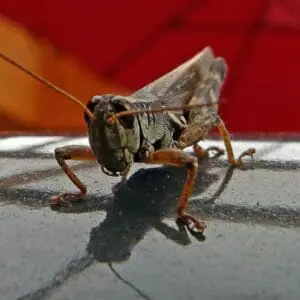Right now, there are hundreds of billions of locusts wreaking havoc on vegetation across Africa. Experts are sounding the alarm, including United Nations humanitarian chief Mark Lowcock, who said the swarm has the potential to be "the most devastating plague of locusts in any of our living memories if we don't reduce the problem faster than we're doing at the moment."
The outbreak has hit East Africa particularly hard as many countries in the region are heavily dependent on agriculture. Locust swarms devastate food crops and raise food insecurity, an issue many of the countries already struggle with. According to the UN, the swarms are the largest in Somalia and Ethiopia in 25 years and the largest in Kenya in 70 years. In Kenya, Joseph Katone Leparole — who has lived in the hamlet, Wamba, for most of his 68 years — described the plague as being similar to an umbrella covering the sky.
Previous locust attacks like this are the reason Arizona State University established the Global Locust Initiative (GLI) to engage key actors in locust research and management to develop research, partnerships and solutions for transboundary pest management in agroecosystems around the world. The initiative is led by Arianne Cease, a senior sustainability scientist and the director of the GLI in the Julie Ann Wrigley Global Institute of Sustainability and Rick Overson, research coordinator for the GLI.
“Beyond immediate effects on agriculture, locust outbreaks can have substantial long-term impacts on livelihoods,” Cease said. “An economic study looking at the 1988 desert locust outbreaks in Mali found that children born during plague years in villages impacted by locusts were much less likely to start school than children born in villages not impacted by locusts.”
Overson agrees. “Locusts are still quite unpredictable, and we have a lot to learn," he said. Read more in an interview with Cease and Overson in ASU Now.
